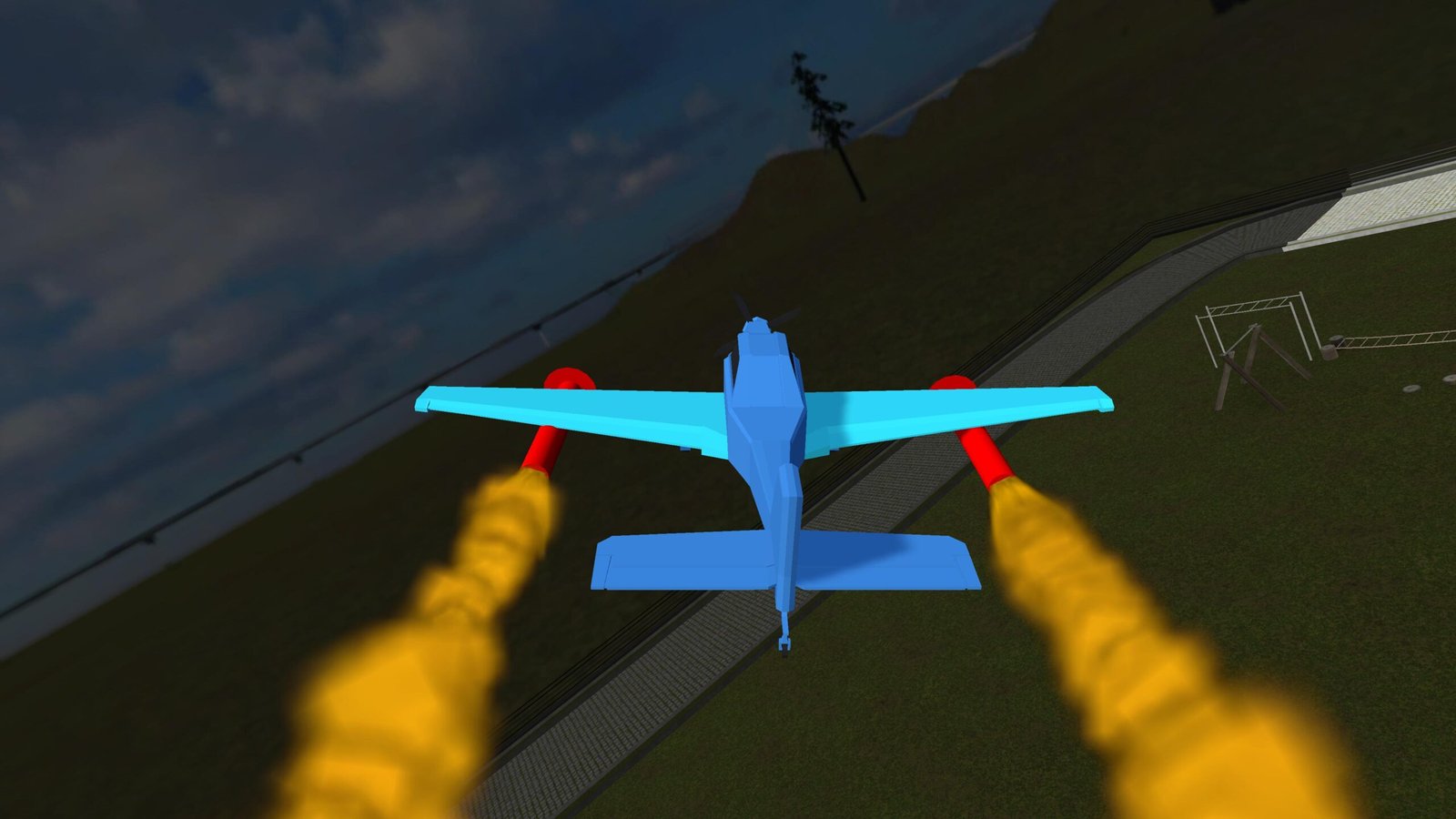Newton’s Third Law of Motion Experiment
Newton’s Third Law of Motion states: For every action, there is an equal and opposite reaction. This law forms the foundation of all motion in the physical world. It means that if one object applies a force on another, the second object applies a force of equal strength but in the opposite direction.
Understanding the Concept
To make this law easier to understand, imagine sitting in a chair. Your body applies a downward force on the chair (action), and the chair pushes back up with the same force (reaction). Without this reaction force, you would fall right through!
In this experiment, we use a plane fitted with rockets to demonstrate this principle. When the rocket fires, it pushes gas backward. That expelled gas pushes the plane forward — a perfect example of action and reaction. If two rockets are placed symmetrically on the wings, the plane moves straight. But if only one rocket is used, the imbalance causes the plane to spin or tilt. This also teaches us about torque and balance in motion.
Real-Life Applications of Newton’s Third Law
- Rocket launch: Fuel burns and escapes downward, pushing the rocket upward.
- Jet engines: Push air backward to move the plane forward.
- Fire extinguishers in space: When activated, they push astronauts in the opposite direction.
- Balloons: Letting air out makes them fly in the opposite direction.
- Missiles: Move forward by the reactive force of fuel burning.
Observations from the Experiment
- Two balanced rockets = forward motion.
- One rocket = rotation or deviation.
- More thrust = faster motion.
- Unequal thrust = imbalance or spinning.
Key Variables and Their Roles
| Variable | Meaning | Effect on Motion |
|---|---|---|
| Thrust Force from Rocket | Force generated by the expulsion of gas. | More thrust increases forward acceleration. |
| Rocket Placement | Location of rockets on the plane. | Symmetrical placement ensures straight motion; asymmetrical causes rotation. |
| Mass of Plane | Total weight of the plane including rockets. | A heavier plane accelerates less with the same thrust. |
| Number of Rockets | Total rockets used for propulsion. | More (balanced) rockets ensure stronger and more stable movement. |
Experience Newton’s Laws in Action with Dencity
The Dencity Virtual Science Lab lets students perform the Newton’s Third Law of Motion experiment safely and interactively using rockets on a virtual plane. It’s available on Android, iOS, and Desktop devices.
Whether you’re in class 9 science or simply curious about physics, Dencity helps you:
- Simulate rocket thrust.
- Change variables like mass and number of rockets.
- Observe real-time reactions.
- Learn by doing — no risk, no waste, just pure science!
With high-quality graphics, real-world physics, and step-by-step solutions, Dencity makes the concept stick in your mind.
Dencity for Teachers
Dencity promotes interactive teaching by helping educators:
- Conduct live, virtual science experiments.
- Assign science lab activities in under 30 seconds.
- Use real-time simulations to explain concepts.
- Track student progress with auto-generated reports.
- Teach Newton’s Laws without needing physical lab equipment.
Create virtual classrooms, control experiments remotely, or let students take charge — perfect for hybrid and remote learning environments.
Works Seamlessly on Interactive Touch Panels
Dencity is optimized for touch panels in classrooms, allowing teachers and students to control every part of the experiment with simple gestures. Rotate the rocket, increase thrust, or change rocket placements instantly with just a touch!
Contact Us for Custom Pricing or Demo
Schools and institutions can contact us at dencityapp.in for custom pricing, bulk licenses, or a live demo to see how Dencity can elevate your science curriculum.
Frequently Asked Questions (FAQs)
- What is Newton’s Third Law?
When one object exerts a force, another exerts an equal and opposite force. - How is this experiment conducted in Dencity?
A plane is equipped with virtual rockets, and students observe how balanced or unbalanced thrust affects motion. - Why does the plane rotate when only one rocket is used?
Because of unbalanced forces, which create torque, causing rotation. - Is this experiment for Class 9 science students?
Yes, this is part of the class 9 science curriculum. - Can I perform this without a real lab?
Absolutely. The Dencity virtual lab lets you do it all on your phone or computer. - Can teachers track student activity?
Yes. Dencity auto-generates reports on student progress and submissions. - Is this available on phones?
Yes, the Dencity app works on Android, iOS, and desktops. - How does Dencity help in interactive learning?
Through simulations, touch controls, and real-time feedback that makes learning engaging. - Is Dencity suitable for schools with smart boards or touch panels?
Yes. It’s fully optimized for interactive touch panels. - How can we get Dencity for our school?
Contact us at dencityapp.in for a customized plan or demo.
Let science come alive with Dencity – The Future of Science Education.







